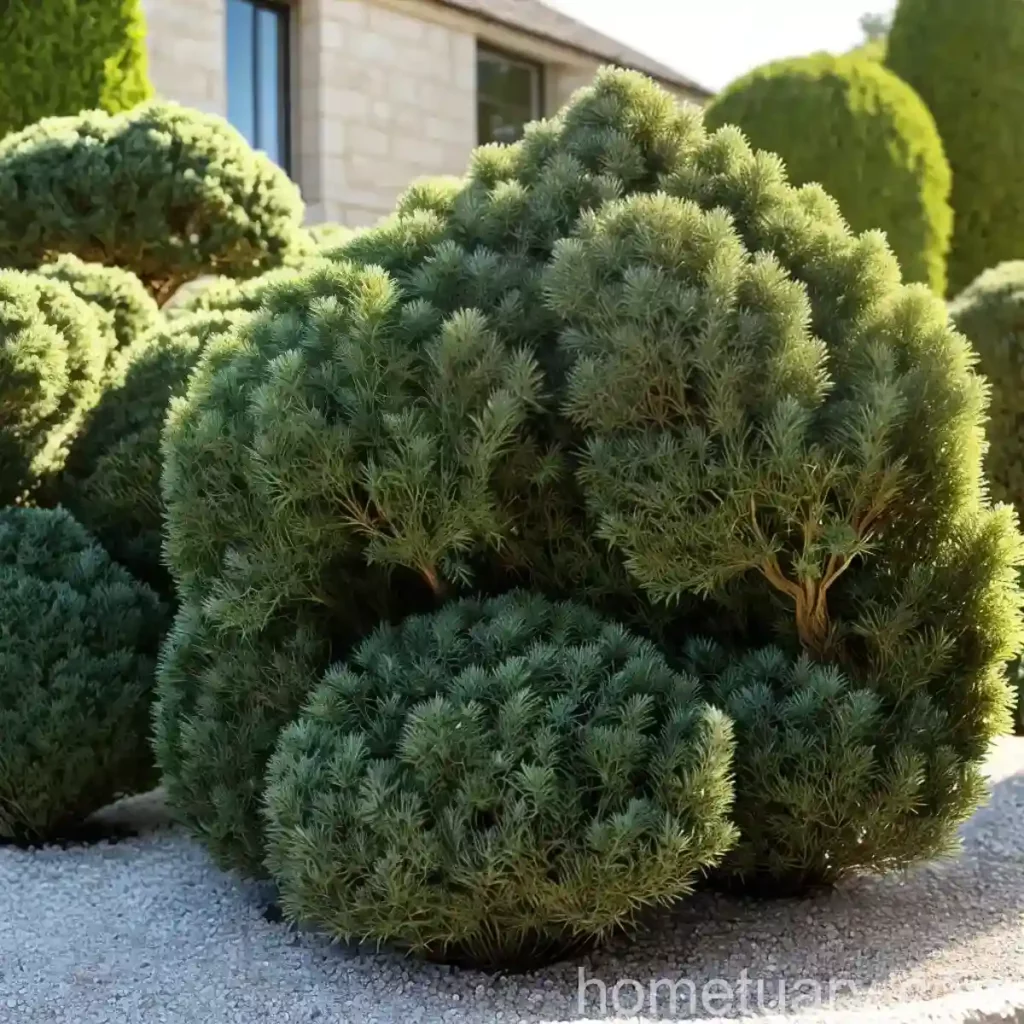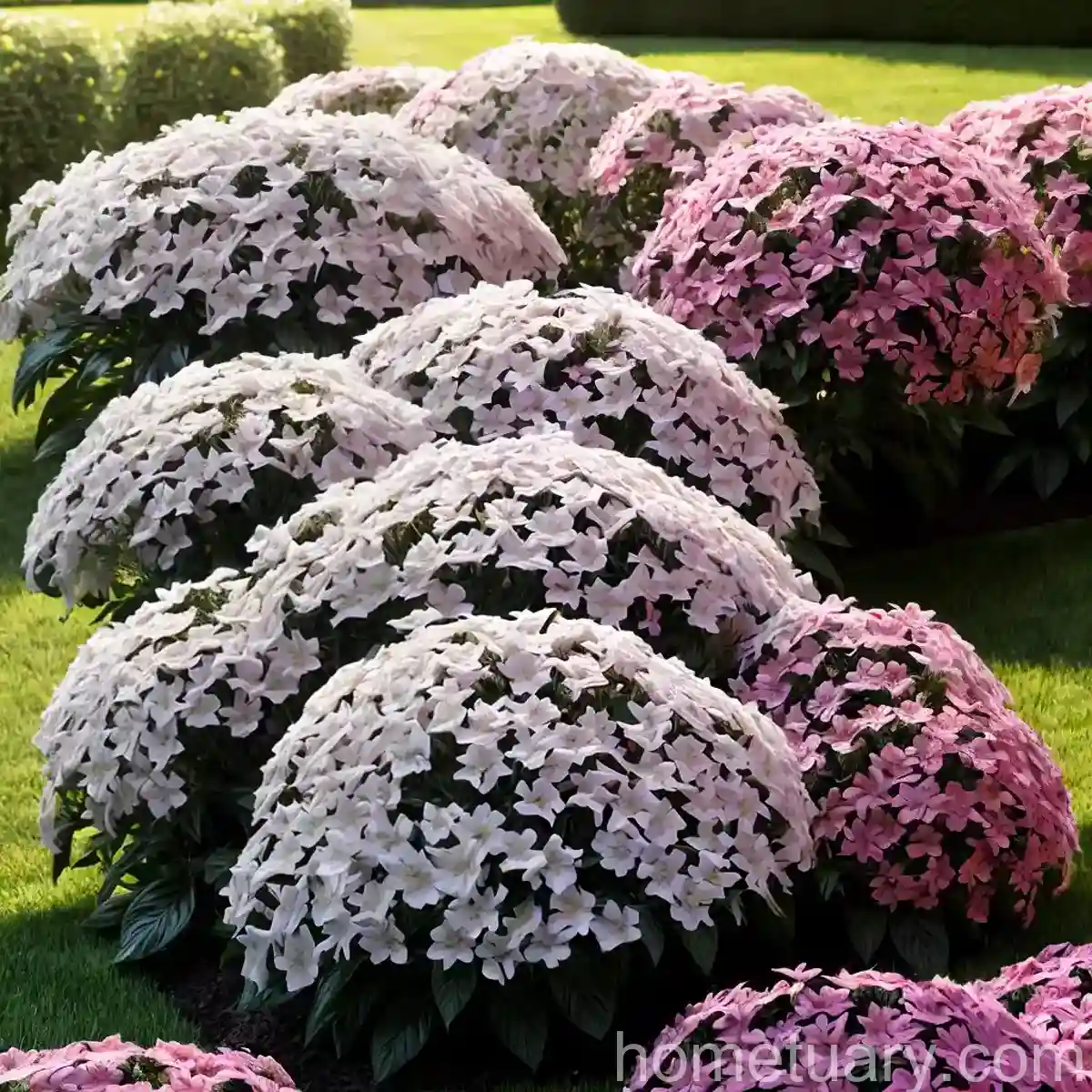All About Creeping Juniper (Juniperus horizontalis ‘Prince of Wales’)
Creeping Juniper, scientifically known as Juniperus horizontalis ‘Prince of Wales’, is a low-growing, evergreen shrub belonging to the Cupressaceae family. Its scaly, dense foliage and vibrant green color make it a popular choice for ground cover, erosion control, and landscape border enhancements. In this comprehensive guide, we will explore the culture, uses, maintenance tips, and interesting facts about this delightful plant.
What is Plant: Creeping Juniper (Juniperus horizontalis ‘Prince of Wales’)
Description
Creeping juniper, also known as creeping cedar or creeping savin, is native to North America and is widely cultivated for its ornamental value. Its low spreading habit, with a height of only 8-18 inches and a spread of 4-6 feet, makes it an ideal choice for ground cover. The foliage consists of prickly, needle-like leaves that grow in dense, horizontal layers, providing a cascading effect.
Growth Habit
This plant is characterized by its prostrate growth pattern, with trailing branches that gracefully hug the ground. Over time, it forms a low carpet-like cover, making it an excellent choice for slopes, rock gardens, and border landscapes.
Flowering and Fruiting
The creeping juniper blooms in spring, producing inconspicuous flowers. These are followed by small, berry-like cones that add ornamental value to the plant.
Cultivars
‘Prince of Wales’ is a popular cultivar known for its vivid green foliage and excellent trailing growth habit. Its adaptability to a wide range of conditions and its vibrant color make it a sought-after choice for landscaping projects.
Key Takeaways – Creeping Juniper (Juniperus horizontalis ‘Prince of Wales’)
Before delving into the specifics of the culture, uses, and maintenance of creeping juniper, let’s highlight the key takeaways regarding this charming plant:
- Low-growing juniper plant varieties
-
Creeping juniper falls into the category of low-growing plants, making it an ideal choice for ground cover and landscaping projects where a carpet-like growth is desired.
-
Creeping foliage plants
-
With its trailing branches and dense foliage, creeping juniper adds a cascading and flowing effect to the landscape.
-
Juniper ground cover
-
Creeping juniper is one of the most popular juniper species used as ground cover due to its low maintenance, hardiness, and attractive appearance.
-
Dwarf juniper varieties
-
As a low-growing, compact shrub, creeping juniper qualifies as a desirable dwarf variety suitable for small spaces and rock gardens.
-
Evergreen ground cover plants
- The persistent, vibrant green foliage of creeping juniper makes it an excellent choice for evergreen ground cover, providing year-round interest in the garden.
Now, let’s explore the detailed cultural requirements and characteristics of creeping juniper, including its preferred conditions for growth, uses in landscaping, maintenance guidelines, and propagation methods.
Culture
Uses
Garden Borders: Creeping juniper serves as an excellent low-growing border plant, adding texture and a sense of flow to garden edges and walkways.
Ground Cover: Due to its prostrate growth habit, creeping juniper is widely utilized to create a ground-hugging cover that prevents erosion, suppresses weeds, and provides an attractive carpet-like appearance.
Rock Gardens: The cascading form of creeping juniper makes it a delightful addition to rock gardens, where it can fill in gaps between rocks and spill over edges, softening the overall look.
Slopes and Erosion Control: Its low, spreading nature makes creeping juniper an effective solution for stabilizing slopes and preventing soil erosion.
Containers: As a versatile plant, creeping juniper can be grown in containers, hanging baskets, and planters to add a trailing and cascading effect to the arrangement.
Water
Creeping juniper thrives in well-drained soil and is exceptionally drought-tolerant once established. It is important to avoid overwatering, as excess moisture can lead to root rot and other fungal diseases. Regular watering during its establishment phase is crucial to promote a healthy root system, after which it should be able to withstand periods of dryness.
Sunlight
This plant flourishes in full sun to partial shade. While it can tolerate some shade, it exhibits its best growth and coloration in full sun, making it an ideal choice for sunny spots in the landscape.
Fertilizer
Generally, creeping juniper is not a heavy feeder and can thrive in nutrient-poor soils. However, a balanced fertilizer can be applied in early spring to support its growth and maintain vibrant foliage. It is essential to follow the recommended dosage to prevent fertilizer burn and adverse effects on the plant.
Soil
Creeping juniper prefers well-drained, sandy or loamy soil with a slightly acidic to neutral pH. While it can tolerate a wide range of soil types, good drainage is crucial to prevent waterlogged conditions, which can lead to root diseases.
Pruning
Pruning requirements for creeping juniper are minimal, as it naturally maintains its compact, low-growing form. However, occasional pruning may be needed to remove dead or diseased branches, shape the plant, or prevent it from encroaching on walkways or other areas. It is best to perform pruning in early spring before new growth begins.
Propagation
Creeping juniper can be propagated through several methods including:
- Cuttings: Softwood or hardwood cuttings taken in late spring or early summer can be successfully rooted to create new plants.
- Layering: Encouraging the stems to root by burying them in the soil and allowing them to develop their own root systems.
- Seed: While possible, seed propagation is less common and takes longer to produce mature plants compared to other methods.
Container Popularity
Creeping juniper is a popular choice for container gardening due to its trailing growth and adaptability to confined spaces. It adds an appealing cascading effect when grown in containers and hanging baskets, making it a versatile option for enhancing patio and balcony settings.
Common Diseases
Creeping juniper is relatively resistant to most diseases, especially when grown in optimal conditions. However, it can be susceptible to certain issues including:
- Phomopsis Blight: This fungal disease can cause dieback and browning of the foliage, leading to unsightly patches on the plant.
- Cedar-apple Rust: While more commonly associated with Eastern Red Cedars, creeping juniper can serve as an alternate host for this disease, resulting in orange, gelatinous spore-producing structures on the foliage.
- Root Rot: Overwatering or poorly-drained soils can lead to root rot, causing the plant to decline and exhibit signs of stress.
Disease Diagnosis
To diagnose potential diseases in creeping juniper, it is essential to regularly inspect the plant for any unusual symptoms such as discoloration, wilting, or dieback of foliage. Likewise, being aware of the specific diseases that commonly affect juniper species can aid in early identification and intervention.
Common Pests
Creeping juniper may encounter pest issues including:
- Juniper Scale: This pest appears as small, brown or white, waxy bumps on the foliage and can lead to yellowing and decline of the plant.
- Spider Mites: These tiny arachnids can cause stippling and webbing on the foliage, leading to reduced vigor and overall plant health.
- Bagworms: The larvae of these pests construct spindle-shaped bags on the plant, feeding on the foliage and causing damage.
Regular monitoring, proper cultural practices, and timely intervention through mechanical or chemical means can help manage pest infestations effectively.
Botanist’s Tips
To ensure the optimal growth and health of creeping juniper, consider the following tips:
- Site Selection: Choose a location with well-drained soil, adequate sunlight, and good air circulation to promote healthy growth and minimize disease issues.
- Minimal Watering: Once established, limit watering to periods of drought, as excessive moisture can negatively impact the plant’s health.
- Pruning Caution: While minimal pruning is required, avoid heavy pruning, as the plant’s trailing habit is one of its key ornamental features.
- Pest Awareness: Regularly inspect the plant for pests and signs of disease, and take appropriate measures for prevention and control.
- Companion Planting: Pair creeping juniper with other drought-tolerant, low-growing plants for a cohesive and visually appealing landscape design.
Fun Facts
- Creeping juniper is often used in xeriscaping due to its drought tolerance and minimal water requirements.
- The aromatic foliage of creeping juniper emits a pleasant scent when crushed, adding sensory appeal to the garden.
- In addition to its ornamental uses, creeping juniper has a history of medicinal and culinary applications, particularly among Native American tribes.
Links to External Resources
For further information on creeping juniper and its various applications in landscaping and garden design, explore the following resources:
- The Spruce – Creeping Juniper Profile
- Missouri Botanical Garden – Juniperus horizontalis ‘Prince of Wales’
- RHS – Juniperus horizontalis ‘Prince of Wales’
In conclusion, creeping juniper (Juniperus horizontalis ‘Prince of Wales’) is a versatile, low-maintenance plant with numerous landscaping applications. Whether used as a ground cover, border plant, or container specimen, its exceptional trailing growth, vibrant foliage, and resilience make it an asset in garden designs. By understanding its cultural requirements, potential issues, and propagation methods, enthusiasts can fully appreciate and maximize the ornamental value of this charming evergreen shrub.
Remember, if you wish to incorporate an eye-catching, low-growing plant that adds visual interest and functionality to your landscape, consider the myriad benefits of adding creeping juniper to your garden!















